Should You Plant Trees In Summers In Calgary?
Reading time: 8 minutesPlanning to lay down some trees in your Calgary yard this summer? Hold that thought—and your shovel!
While planting a tree might seem like a good idea to keep you busy in July, Calgary's summer sun might have other plans for your trees.
There’s much to love about trees and the pure beauty they add to any yard. Yet, they are a big commitment, especially in urban settings where every green thumb counts.
When it comes to timing, not all seasons are created equal. Let’s dig into why summer in Calgary might just be a hot mess for your new tree buddies.

Calgary’s Summer and Its Trees
Calgary's climate, classified as Zone 4a, presents unique challenges for tree health and growth. This region experiences significant temperature swings between seasons.
During the summer months, Calgary can face intense heat waves combined with periods of low rainfall. These create stressful conditions for trees, particularly new plantings. If you’re thinking of planting a tree this summer, you should know what you’re up against.
Heat stress can cause leaf scorch, where leaves turn brown and dry at the edges. They can significantly reduce a tree’s ability to photosynthesize effectively. Inadequate rainfall further exacerbates this, leading to dehydration, reduced growth, and weakened defences against pests and diseases.
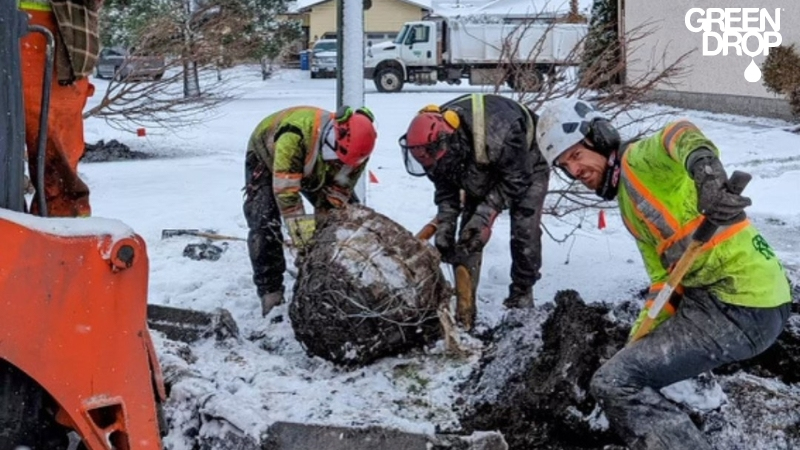
Challenges of Planting Trees in the Summer
Planting trees in the summer introduces additional physiological stresses that can affect their survival and growth. Here’s what happens during these hot and dry months:
- High Temperatures: Calgary can experience high temperatures during the summer, which can stress newly planted trees. Young trees are particularly vulnerable as they haven’t yet established a deep root system to access water from deeper soil layers.
- Drought Conditions: As mentioned earlier as well, summers can bring drought conditions, reducing the availability of water. Trees require consistent watering, especially in their first few years of growth.
- Increased Transpiration Rates: Water evaporates rapidly from trees' leaves, which can lead to a water deficit within the tree.
- Watering Restrictions: Municipal watering restrictions, like the recent (as of June 14, 2024) Stage 4 outdoor water restrictions in effect, can limit the amount of water that can be used for irrigation, making it harder to provide adequate moisture for newly planted trees. We don’t have these restrictions in spring or fall.
- Sunscald: This happens when intense sunlight damages the bark of young trees, which is less capable of reflecting heat due to its thinner and more sensitive nature. Sunscald can cause cracks and cankers on the tree trunk, leaving the tree vulnerable to infections and diseases.
- Transplant Shock: Trees planted in the summer may suffer from transplant shock, where the stress of being moved and planted in a new location affects their growth and survival.
- Root Establishment: The warm, dry conditions of summer are not ideal for root establishment. Trees planted in spring or fall have a better chance to establish roots before facing the stress of summer.
- Poor Water Retention in Soil: Summer exacerbates poor water retention, particularly in sandy or heavily amended urban soils that do not hold moisture well. This creates a situation where even frequent watering might not suffice, as the water quickly drains away before it can be utilized by the tree.
- Increased Pests: Summer can bring an increase in pests, such as insects and diseases, that can affect your tree’s health. This is another reason why we don’t prune most trees in summer too. Newly planted trees, being stressed from the move and trying to establish roots, are more susceptible to these pest pressures.
Benefits of Planting in Spring and Fall
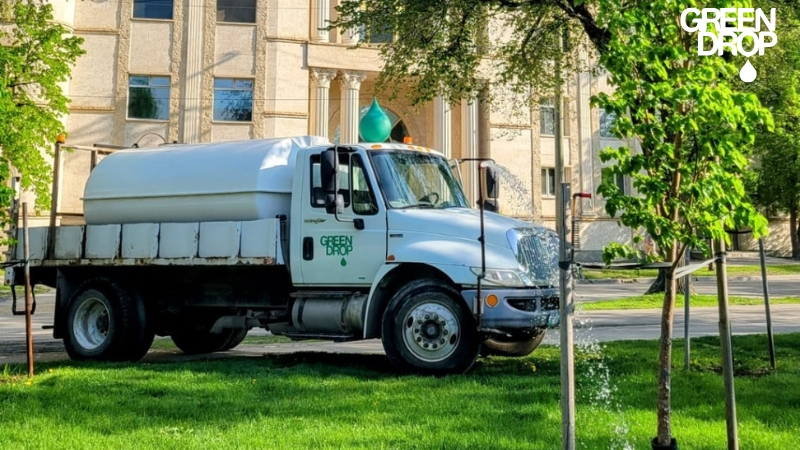
In contrast to the harsh conditions of summer and winter, the gentler seasons of spring and fall are more conducive for planting trees in Calgary. Here’s why:
- Optimal Soil Temperature: Spring and fall provide soil temperatures that are ideal for root growth. It’s warm enough to stimulate development but not hot enough to cause stress.
- Consistent Moisture Levels: These seasons typically offer more consistent rainfall, which helps maintain adequate soil moisture, crucial for new roots to absorb nutrients and establish themselves.
- Reduced Plant Stress: Cooler temperatures in spring and fall reduce the physiological stress on new plantings, allowing your newly planted trees to focus energy on root and foliage development rather than surviving extreme conditions.
- Better Water Efficiency: Mild weather conditions help the soil retain water more effectively, decreasing the need for supplemental irrigation and improving overall water use efficiency.
- Extended Growing Season: Planting in early spring allows trees to take full advantage of the growing season, establishing themselves before summer stresses. In fall, trees can develop roots without the overhead stress of leaves, focusing on building a strong base before winter.
- Low Risk of New Growth Damage: Fall planting avoids the rapid onset of summer heat that can damage new growth, while spring planting gives young trees a head start on establishing before the first winter.
Getting the Ground Ready for Planting
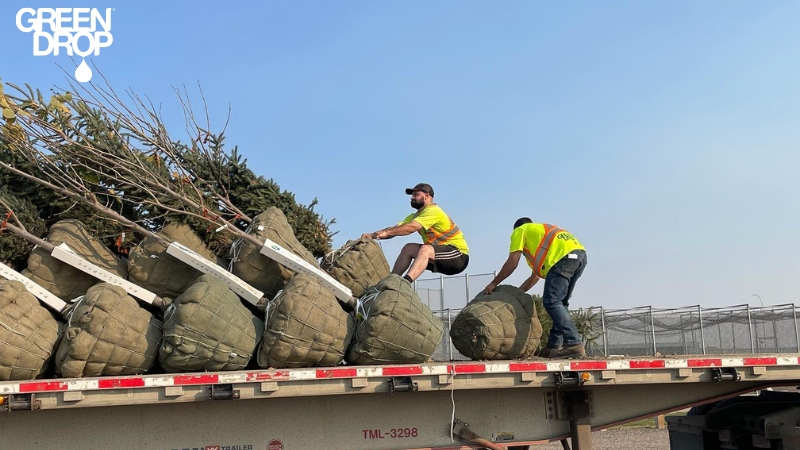
Before you bring out the shovel, there's a bit of groundwork to lay (literally and figuratively). Properly preparing the site can make or break your tree-planting mission.
- Site Selection: Picking the perfect spot is about more than just finding where the tree looks best. Consider the tree’s mature size, both height and root spread. Make sure it’s far enough from your home, power lines, and underground utilities to avoid a growing disaster. Also, think about sun exposure; most trees crave full sun (at least six hours of direct sunlight daily).
- Rooting for Roots: When preparing the planting site, dig a hole that's generously wide (usually about two to three times the width of the root ball) but no deeper than the root ball itself. This gives roots the space to spread out without forcing them too deep, which can lead to waterlogging and suffocation.
- A Head Start: Adding some compost or well-rotted manure to the hole can give your tree a nutritional head start. Just mix it with the soil you removed to avoid creating layers that can impede water movement.
Planting the Tree
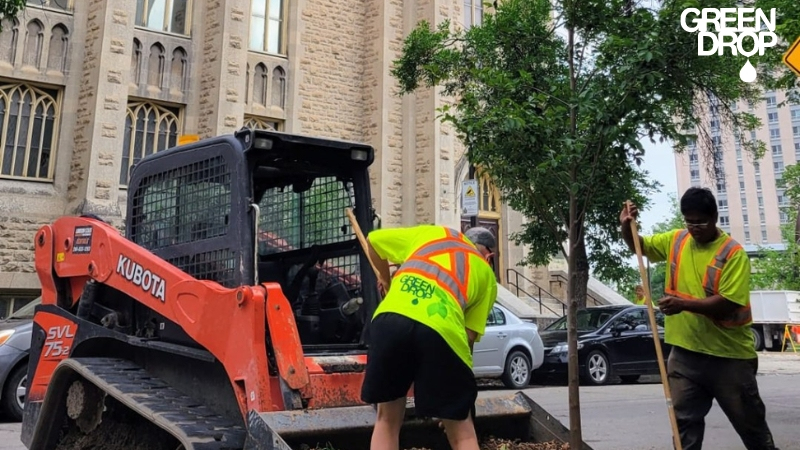
Once you’ve done the ground prep, it’s now time to plant your tree. Here’s how we go about it:
- Handling the Tree: It’s important to keep the tree’s root ball moist and covered during transport to prevent drying out. If the roots are tightly bound in a container, we gently loosen them without overly disturbing the root structure. For burlap-wrapped trees, we may place the tree in the hole with the burlap and remove it after positioning the tree to avoid disturbing the roots.
- Planting the Tree: We place the tree in the center of the hole. The top of the root ball should be level with or slightly above ground level to allow for settling and to prevent water from pooling around the trunk. We then fill the hole with the excavated soil, gently firming it down as we eliminate air pockets. It’s important not to tamp down too hard as this can compact the soil and reduce air circulation.
- Watering and Mulching: Water the tree thoroughly after planting to settle the soil around the roots and help reduce stress from transplanting. Apply a 1–2-inch layer of organic mulch around the base of the tree, extending out to the drip line but avoiding contact with the trunk. Mulch helps retain soil moisture, suppress weeds, and regulate soil temperature.
- Staking: If your tree is tall or planted in a windy area, staking will provide support. Ensure stakes are not too tight to allow the tree some movement, which helps it develop a stronger trunk. Remove stakes after the first year to avoid restricting growth.
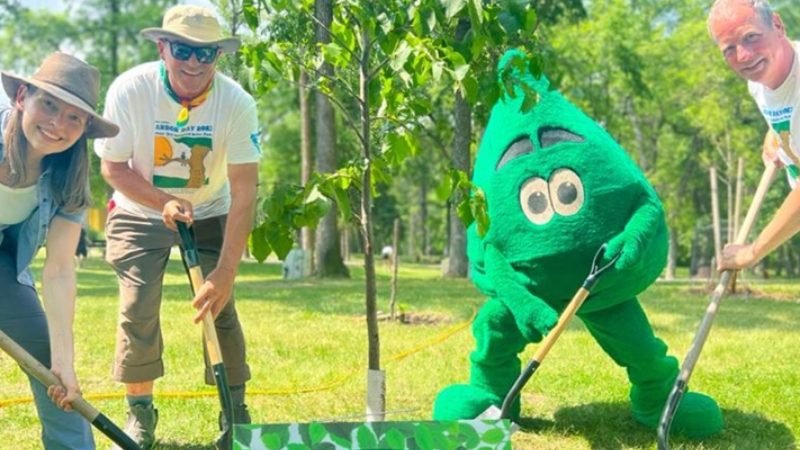
Post-planting Care
Follow these tips to make sure your newly planted tree gets the best care possible and grows up into the magnificent giant you want it to be.
- Watering: During the first year, continue deep watering weekly, adjusting based on rainfall and weather conditions. In the second year, you can reduce watering to every two weeks, and in subsequent years, water as needed during dry periods. Deep root watering is the way to go! This encourages roots to grow deeper and makes the tree more resilient to drought.
- Mulching: To maintain its benefits, refresh the mulch layer each spring and fall. Watch for mulch decomposition and replenish as needed.
- Pruning: Limit tree pruning to removing dead or damaged branches during the first year and at the right time. Your arborist will best guide you on this, depending on the tree type. Extensive pruning can stress the young tree. In subsequent years, prune during the dormant season to shape the tree and remove any crossing branches, ensuring good air circulation and structural integrity.
- Fertilizing: Deep-root tree fertilization in the following growing season is another excellent treatment option for trees struggling or experiencing health problems. Your arborist may inject our very own formulated RootBoost fertilizer under the ground between 6–12 inches, straight to the roots.
- Preparing for the First Winter: Give your tree a deep watering before the first frost to ensure it has enough moisture to survive the winter. Also, add an extra layer of mulch to insulate the roots from extreme cold. Make sure it’s not piled against the trunk.
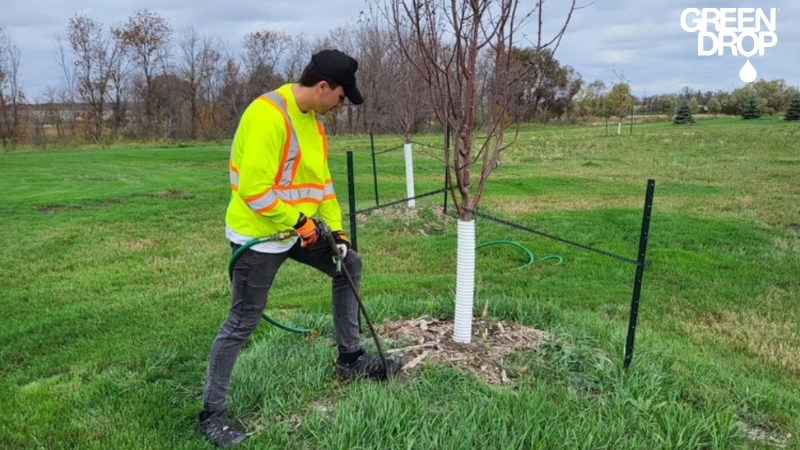
Dig Deep for a Greener Tomorrow with Green Drop
Planting a tree is just the beginning of a journey toward a greener, more beautiful yard. Our team of 19 ISA-certified arborists and 2 BCMA-certified staff members are here to ensure your tree thrives from day one.
With Green Drop, you’re not just planting a tree; you’re investing in a future of lush, vibrant growth. Ready to get started? Book a free consultation with our experts today, and let us help you choose the perfect tree for your yard. Together, we can make your landscape flourish – one tree at a time.
In addition to Calgary, we provide services all across Western Canada in cities like Regina, Edmonton, Red Deer, Saskatoon, and Winnipeg.

